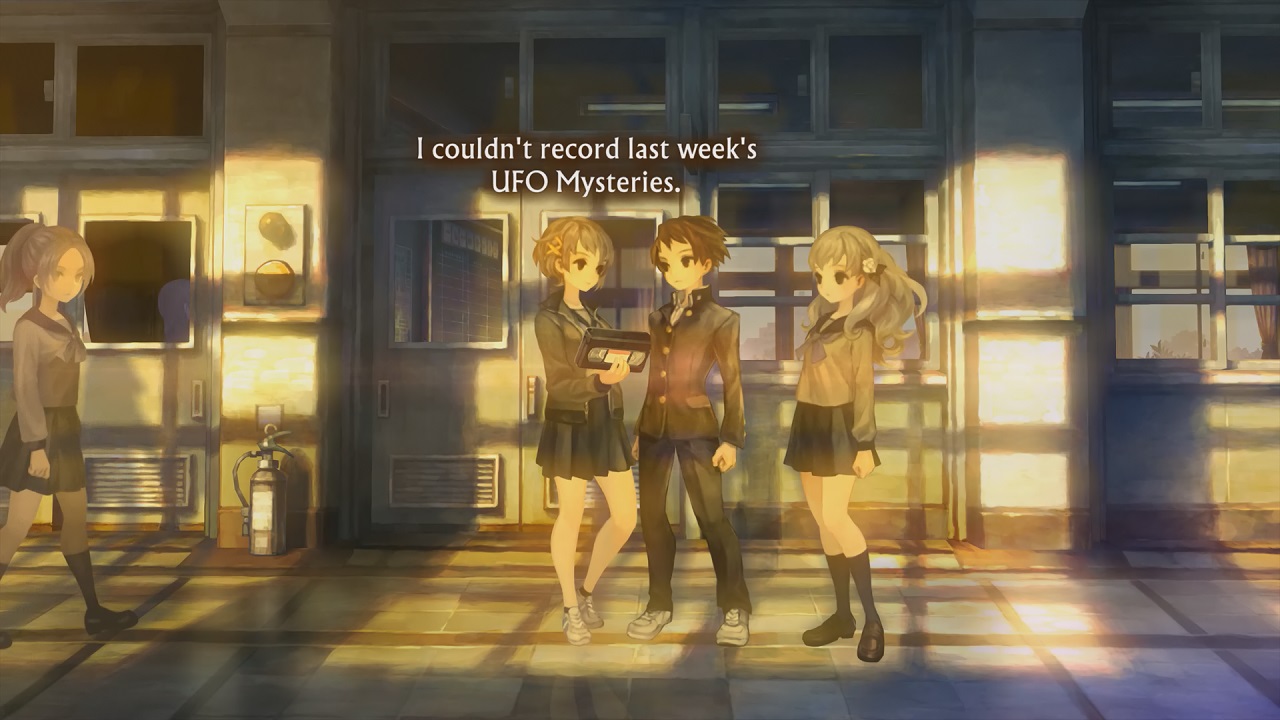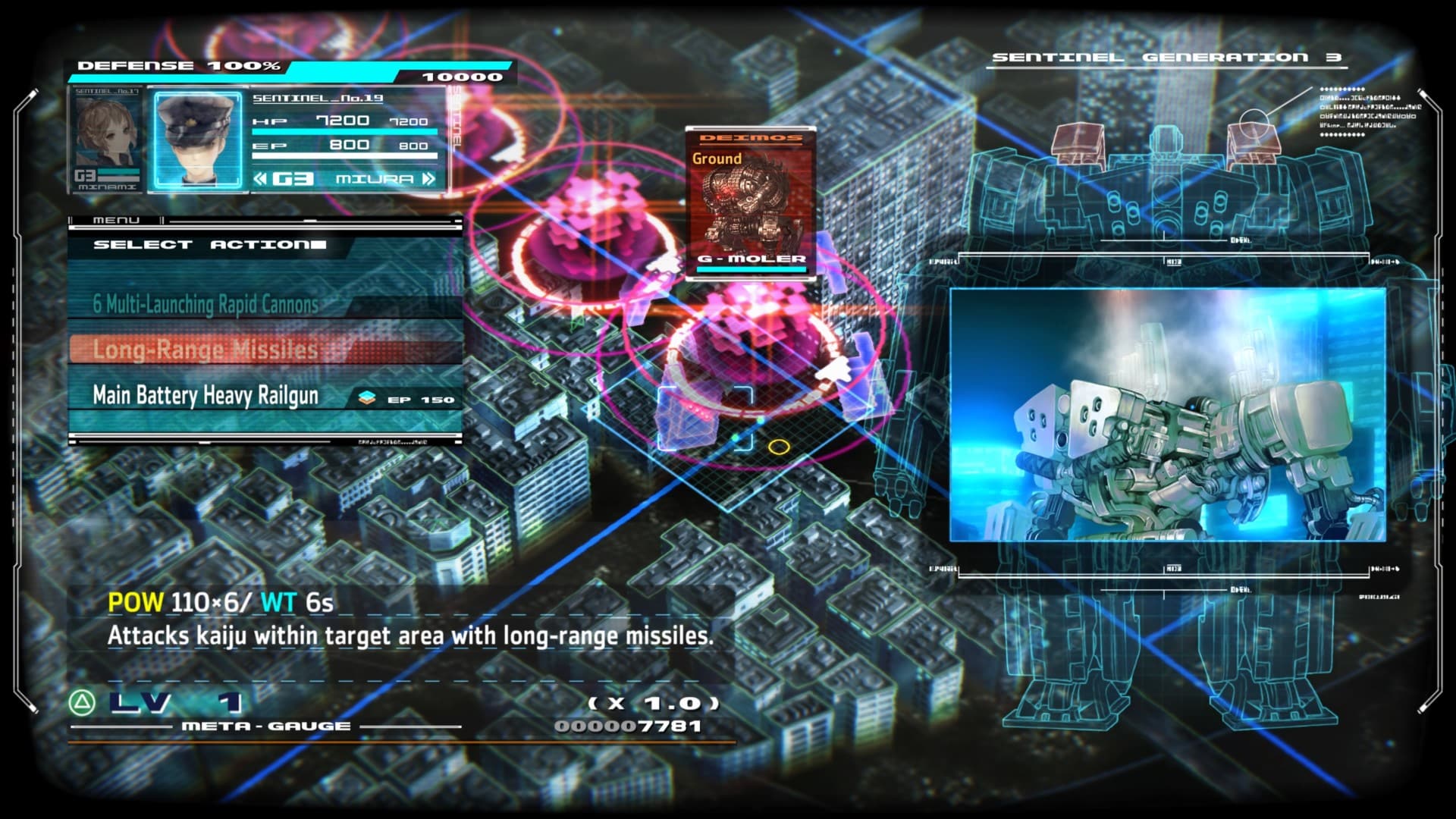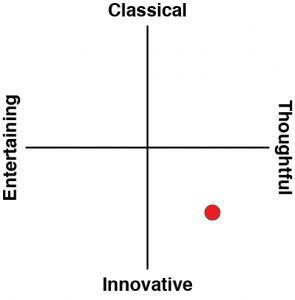13 Sentinels: Aegis Rim did to me what all good science fiction does – it made me, just for a little bit, question my perception of reality. Vanillaware’s latest title deviates from its gorgeous 2D fantasy brawlers to deliver a visual-novel-RTS hybrid that’s heavily focused on character interaction. The strategy gameplay is fine, and a worthwhile challenge on the highest difficulty, but the real showstopper here is the narrative. Despite mixing in just about every science fiction trope from alien invasions, humongous mecha, time travel, men in black, memory tampering and more, it somehow stays well-grounded to human emotion and it’ll leave a lasting impression on anyone ready to brave its complexity.
Related reading: Our review of the game on release on PlayStation 4.
It’s a shame that this title was at first a PS4 exclusive – it originally opened to lukewarm sales before strong reviews and word-of-mouth drove its popularity. It’s my great hope that the Switch port introduces it to a wider fanbase and some longer-lasting success, because this is definitely not a game to be missed.
For those (like myself) who may have skipped this on PS4, there’s no shame because the Switch version is easily the best way to play. The game is broken up very modally into combat and narrative segments, with each one further subdivided into 10-15 minute chapters. This is a fantastic game to play on-the-go, since there are plenty of stopping points and the game is seemingly always asking if you want to save. A handy chat log accessible via the minus button, and a glossary of terms, means that this is one of those games you can chip away at a little at a time, without losing out on any of the experience.
Or, alternatively, you could marathon it – the narrative is rife with plot twists and cliffhangers, and it’s ever so tempting to play out the next chapter immediately after finishing the previous. The genius and wickedness of the game’s plot is that it isn’t structured like a traditional narrative with a beginning, middle and end – instead, it’s a nonlinear web of conspiracies, interconnectedness and betrayal. Every chapter hooks the player with a new tantalising morsel of information, tempting them with a step closer to the truth, but raising half a dozen new questions in the process. My playthrough of the narrative was passionate and feverish.
We follow thirteen teenagers across various periods of time in Japanese history or future, but primarily focused on Sakura High School in 1985, when a swarm of kaiju is about to invade Tokyo and lay waste to the city. As the protagonists go about their daily lives, some have dreams of apocalyptic visions, and other strange things start to happen around the city – explosions, fires, disappearances. For concerns about spoilers I’ll stop here, but it’s a story full of twists and turns, sure to keep readers on the edge of their seat.
Of particular note is the graphics and presentation, which of course being Vanillaware, is gorgeous. There’s a pseudo-3D style used in the narrative backgrounds to give the environments more flair, but the studio’s soft, hand-drawn style is still here in all its glory. This game in particular plays with lighting to great effect – it’s filled with beautiful dawns and sunsets, rainy days and neon nights. All of these look just as fantastic on the Switch’s small screen as they do up on TV, and I love that the PS4 version’s UI has been scaled up to be properly legible when playing handheld, too.
In between narrative segments, players will be required to fight through waves of kaiju in a top-down real-time strategy game segment. In these levels, players take control of a few members of the main cast of thirteen. Each one pilots a mech with slightly different stats, and different enemies need to be dispatched in different ways. The combat is engaging enough but can be easily unbalanced with upgrades and an overreliance on certain skills. On the harder difficulty, these fights do pose a significant challenge, but I switched mine to Casual difficulty early on, because I was far more invested in the story. The strategy is fun, and the character development is robust, but it’s not exceptional, which means it gets overshadowed by the fantastic visual novel segments. At least the combat is relevant to the narrative.
For that reason, I can’t mount an argument that the combat should be removed, but I don’t know if I would have wanted it to be more complex, either. Anything more challenging or involving would have detracted from the game’s strengths, but there are also certainly resonances between the story mode and the giant mecha fights. At the very least, they’re a good change of pace.
13 Sentinels: Aegis Rim is lengthy and complex, particularly if you really want to understand every little nuance of the story. The story might not feature player agency, as it has no branching choices or bad endings (and I’d argue that this is a strength of the game, that it’s determined to tell one story and tell it well) but even then the narrative alone will take at least fifteen hours to see to the end. Add on a few hours of the strategy RPG and you’ve got a hefty title on your hands. Ultimately though, I stuck through with 13 Sentinels because it’s paced immaculately – the mystery of the narrative gets its hooks into you and rushes you through an intricate web of conspiracy, discovery, and self-reflection. It got me to laugh, to gasp, and to view the world differently. We talk a lot about the potential of interactive storytelling to deliver experiences beyond film or print, and yet not many games do – but here is Vanillaware making it look effortless. Here’s hoping that 13 Sentinels is remembered long afterwards for all it has achieved.











I never thought I’d say it but I own a Nintendo console. The Nintendo Switch kinda fell off a boat into my lap so here I am. And 13 sentinels is one of the games on my list.
I’m very sensitive to light though so I don’t really know how to play on the go 😅
Welcome to the Switch club! You’ve got such an exciting library of games to catch up on! 😀